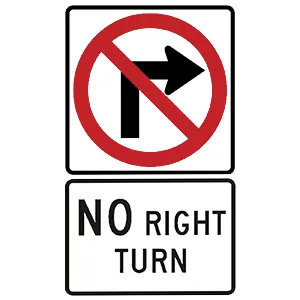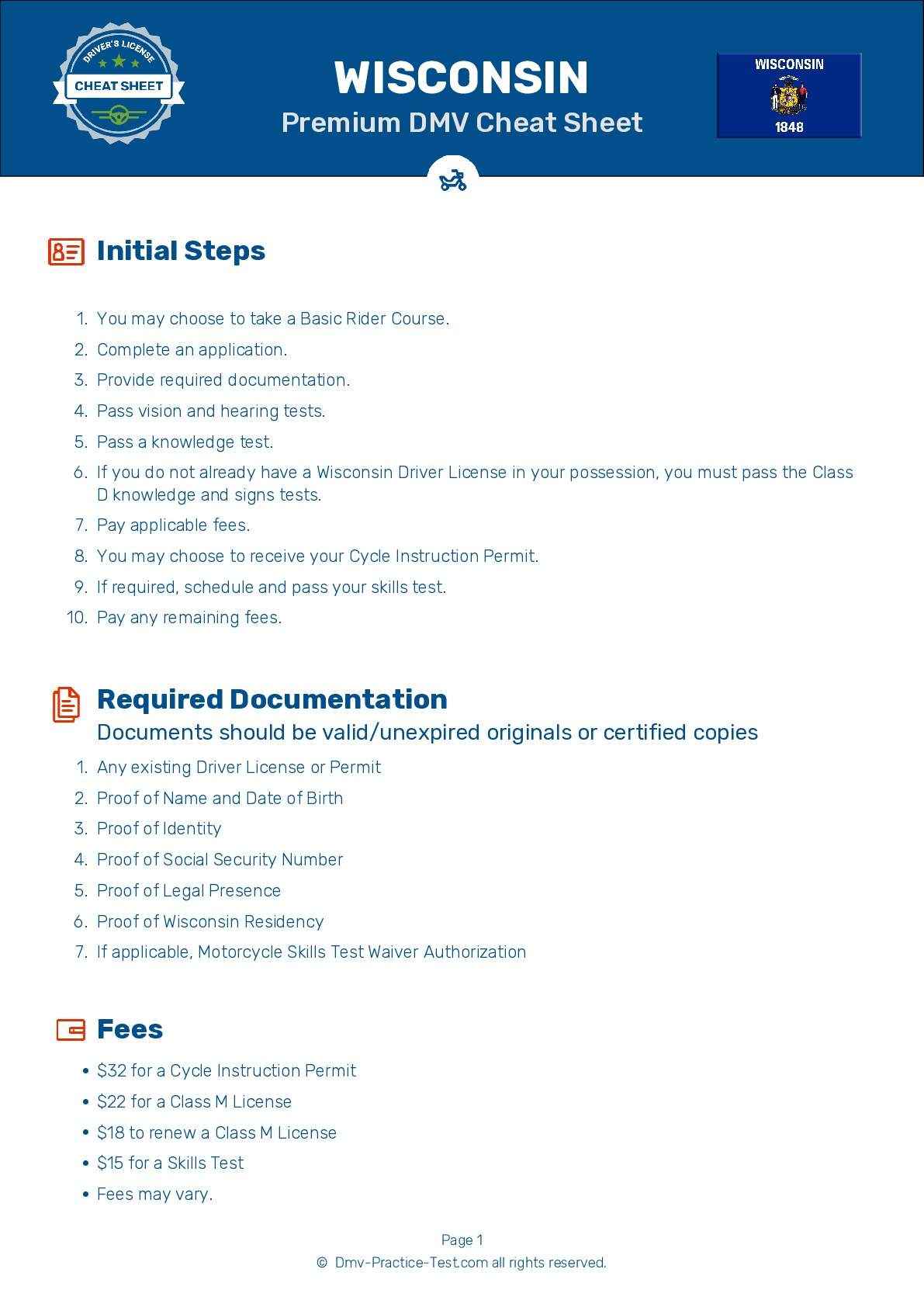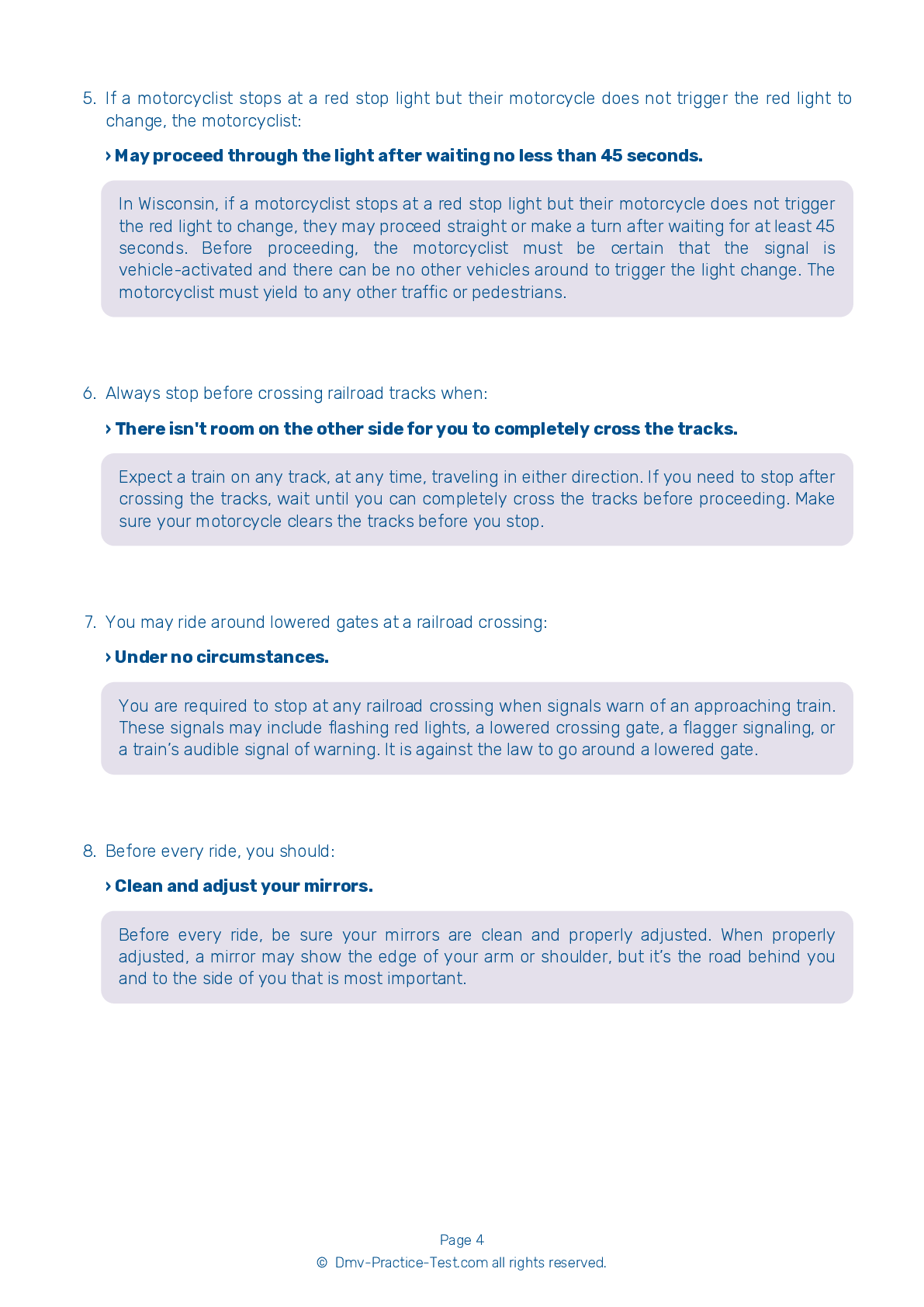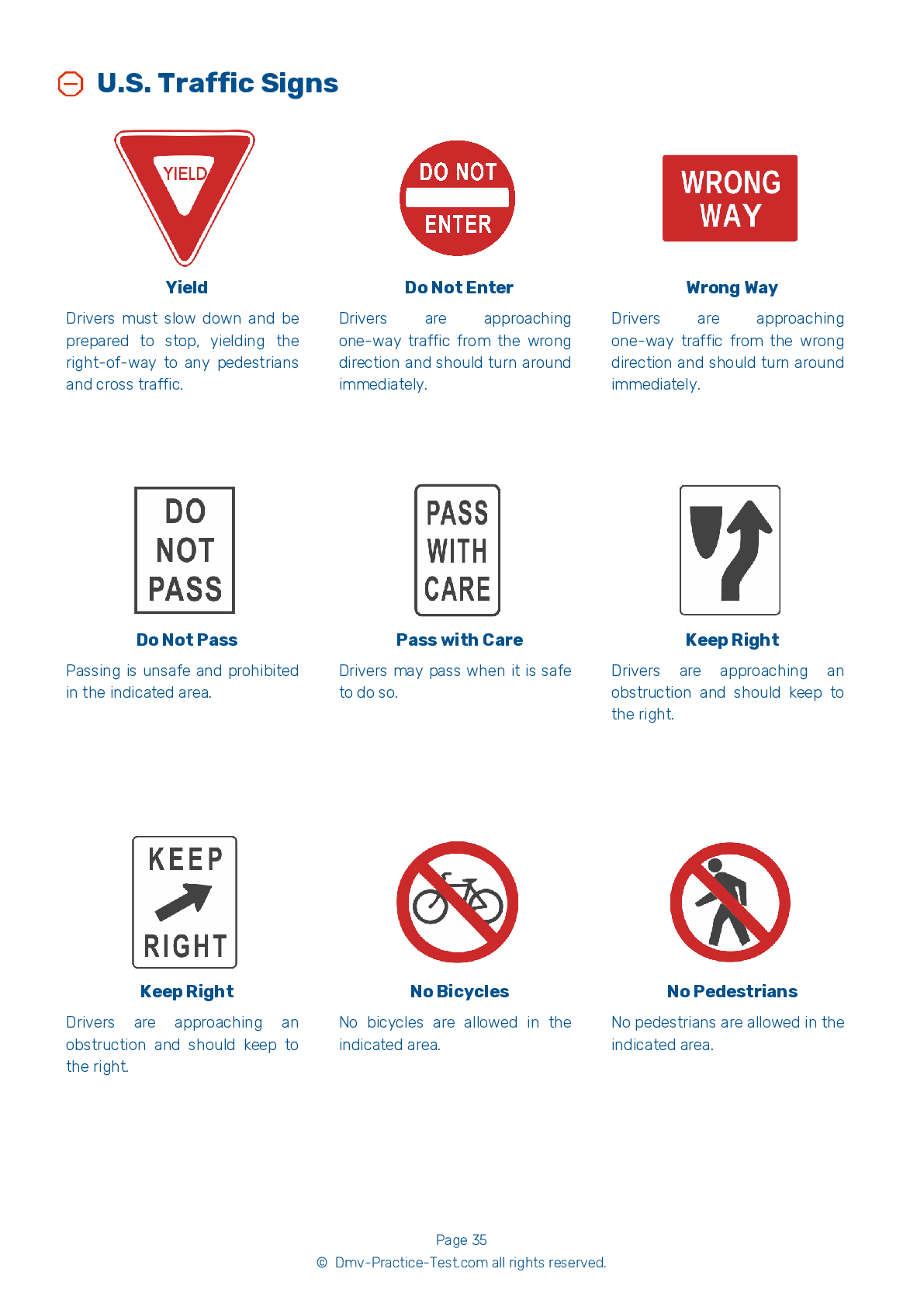Motorcycle Test | License WI 2025 | FREE Online Practice! #3 Page 3 of 5
Take this FREE motorcycle test (license in WI 2025) to check your knowledge of the road rules. To improve your results, download a motorcycle handbook online, study theory, and practice for free on our website. Still worried about how to get a motorcycle license in Wisconsin in 2025? Check our website for more sample tests, train as much as possible, and boost your grades!
16 . When you are riding on a bridge grating, you should:
Crossing rain grooves or bridge gratings may cause your motorcycle to move in a weaving motion. This is usually not dangerous, so simply relax and proceed across the surface at a steady speed. Trying to ride at an angle to compensate for the weave is dangerous because it forces you to zigzag to stay in your lane.
17 . Mirror checks should be done:
Frequent mirror checks should be part of your normal scanning routine. Additionally, make a special point of using your mirrors before changing lanes, when stopping at an intersection, and before slowing down.
18 . To safely cross railroad tracks that run parallel to your lane, you should:
To safely cross railroad tracks, trolley tracks, or pavement seams running parallel to your lane, move to a lane position that will allow you to cross them at an angle of at least 45 degrees. Then, make a quick, sharp turn. If you try to edge across, the tracks or seam could catch your tires and throw you off balance.
19 . A simple way to make your motorcycle easier to see is to:
You can make yourself easier to see by wearing brightly-colored, reflective clothing. Ride with your headlight on at all times and use your turn signals and brake light appropriately.
20 . Pick a lane position that:
Choose a lane position that helps you avoid road hazards. Make sure you maintain a safe cushion of space around your motorcycle at all times.
21 . The single most effective thing you can do to improve your chances of surviving an accident is:
The single most important measure you can take to reduce your risk of injury or death in the event of an accident is to wear a helmet.
22 . Goggles will:
Wearing goggles provides protection for your eyes, but not for the rest of your face. A face shield provides protection for your whole face and is recommended above goggles. A windshield is not an adequate substitute for a face shield or goggles.
23 . This sign means:

Where this sign is posted, it is prohibited to make a right turn. It would be unsafe and unlawful to make a right turn at an intersection with this sign.
24 . When riding behind a car, traveling in the left third of the lane allows the driver to see you in their side mirror. What is a downside to this?
Most drivers do not look at their side mirrors as often as they look at their rearview mirror. Therefore, when following a car, it is generally most advantageous to ride in the center portion of the lane where you are most likely to be visible in the driver's rearview mirror.
See the exact questions that will be on the 2025 Wisconsin DMV exam.
99.2% of people who use the cheat sheet pass the FIRST TIME
Jeneen was tired of paying $5/gallon. She got herself a scooter that required the motorcycle license. She studyed the motorcycle test cheat sheet and passed her test the next day!
Christopher tells us how he knew nothing prior to obtaining the motorcycle study guide, and he only got one question wrong because he clicked on the wrong answer by mistake.



